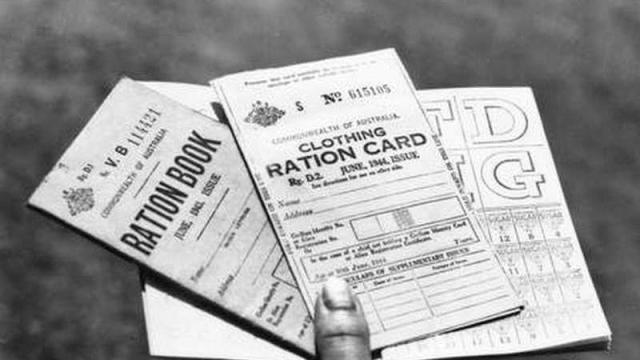When the clock struck midnight on January 1 it seemed like we were entering a decade of plenty. A second roaring twenties that mimicked its 20th century counterpart. Privileged Australians could have almost anything they wanted, when they wanted it. Same day grocery deliveries, expensive breakfasts ordered from their phones and chauffeured rides within minutes.
Only a few short months later and the coronavirus pandemic has made basic groceries so difficult to get that supermarkets imposed restrictions. Nearly 80 years ago, there was a similar system put in place that was led by the government. It was called rations. Here’s what it looked like when they were imposed in World War II.
Australians in the 1940s were luckier than citizens of other countries. Unlike our British cousins, our food supply wasn’t crippled by a German blockade in the North Atlantic Sea. We had a strong production industry so the rations weren’t as harsh here.
But that doesn’t mean they didn’t exist. In 1942 rations were implemented in Australia and they lasted for years after WWII ended in 1945. Butter was the last food to be de-rationed in 1950.
According to the Australian War Memorial, food and clothing rations were introduced to “curb inflation, reduce total consumer spending, and limit impending shortages of essential goods.”
The Australian Bureau of Statistics listed the reasons for rationing at the time.
“Reasons for Rationing. War conditions necessitated civilian rationing of clothing and certain foodstuffs in Australia. The main reasons for clothing rationing were the serious falling off in imports, increased Service demands, and reduced labour for local production of textiles and making up of garments. The supply to the United Kingdom and the Australian and Allied Services of maximum quantities of foodstuffs necessitated the rationing of sugar. butter and meat, while reduction in imports, consequent upon enemy occupation of Java, necessitated the rationing of tea. In addition to the controls exercised by the Rationing Commission, rationing of certain other commodities is directed by other departments, e.g., petrol, tobacco, liquor, etc.”
While our economy-centric government may not agree with the lack of spending, the rest of this sounds familiar.
Not all items were rationed at the same time. Limits on tea and clothing began in mid-1942, but meat wasn’t rationed until the beginning of 1944.
Ration books were given to adults, containing coupons for different goods such as butter or sugar. Ration books would be for use over an extended period, such as a year, so budgeting was required to not run out. Families with children were given extra ration books, and like the federal government’s coronavirus stimulus package, extra provisions were made during the war for the less fortunate.
Unsurprisingly, a black market for rations emerged.
“Not every Australian embraced the war effort, with some prepared to exploit and profit by selling scarce commodities at greatly inflated prices. The demand for controlled commodities created a “˜black market’ where commodities could be acquired without coupons but at high prices,” says the Queensland Governments WWII Historic Places website.
We might not be at that point in 2020, and hopefully won’t be anytime soon, but the behaviour then was reminiscent of the inflated toilet paper and hand sanitiser prices on eBay and the Facebook Marketplace over the past month.
Rationing didn’t always mean people could get what they needed. Stores would still run out of stock due to shortages and high demand.
World War II may have ended 75 years ago, but the past is echoing strongly as hundreds of thousands of Australians find themselves in financial hardship and essential goods become harder to source. Even fresh fruit and vegetables have shot up in price due to a combination of the coronavirus crisis, the recent catastrophic bushfires and demand.
We may not be on rations and perhaps we never will be, but elements of it are starting to emerge following the spate of panic buying. Supermarkets have not only been forced to put a limit on certain items, but categories of items. For example, from Woolworths Online you can’t buy two types of cleaning products that are in the same category family.
In 2020 we may not be at war with a foreign country, but we are fighting off an invisible enemy that is literally killing us. And some Australians are acting like we’re at war with each other, by hoarding and refusing to stay at home.
History exists not only to remember great people or events from the past, but to learn from. If we don’t take heed we may find ourselves limited not only for a few months, but much longer.
